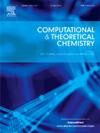金属有机框架的拓扑分析:加强分子建模的回归方法
IF 3
3区 化学
Q3 CHEMISTRY, PHYSICAL
引用次数: 0
摘要
本文章由计算机程序翻译,如有差异,请以英文原文为准。

Topological analysis of metal–organic frameworks: A regression approach to enhance molecular modeling
The novel metal–organic framework crystallized in a parsimonious mep topology based on Frank-Kasper polyhedra, showcasing the potential for innovative structural designs in MOF chemistry. This work aims to investigate the metal–organic framework with this feature through topological analysis. The primary objective of this research paper is to conduct an in-depth analysis of the correlation between topological descriptors and the total -electron energy exhibited by a diverse range of metal–organic frameworks. Through a meticulous examination of various MOFs, the paper endeavors to construct a comprehensive regression model that can effectively elucidate the intricate structural attributes and potential functionalities associated with these unique materials. Furthermore, the study aims to offer valuable insights into the interconnectivity and spatial arrangement of atoms within MOF frameworks, thereby enhancing our comprehension of their chemical, physical, and biological characteristics. Moreover, the research delves into the feasibility of using regression models as predictive tools for numerous molecular properties, presenting a cost-effective alternative to traditional experimental and computational methodologies. By exploring these avenues, the paper contributes to the ongoing discourse on the utilization of mathematical models in the realm of material science and opens up new possibilities for enhancing our understanding of MOFs and their diverse applications in various fields. In conclusion, this study sheds light on the potential implications of leveraging regression analysis in the realm of MOF research, paving the way for innovative approaches to studying and harnessing the unique properties of these intriguing materials.
求助全文
通过发布文献求助,成功后即可免费获取论文全文。
去求助
来源期刊

Computational and Theoretical Chemistry
CHEMISTRY, PHYSICAL-
CiteScore
4.20
自引率
10.70%
发文量
331
审稿时长
31 days
期刊介绍:
Computational and Theoretical Chemistry publishes high quality, original reports of significance in computational and theoretical chemistry including those that deal with problems of structure, properties, energetics, weak interactions, reaction mechanisms, catalysis, and reaction rates involving atoms, molecules, clusters, surfaces, and bulk matter.
 求助内容:
求助内容: 应助结果提醒方式:
应助结果提醒方式:


